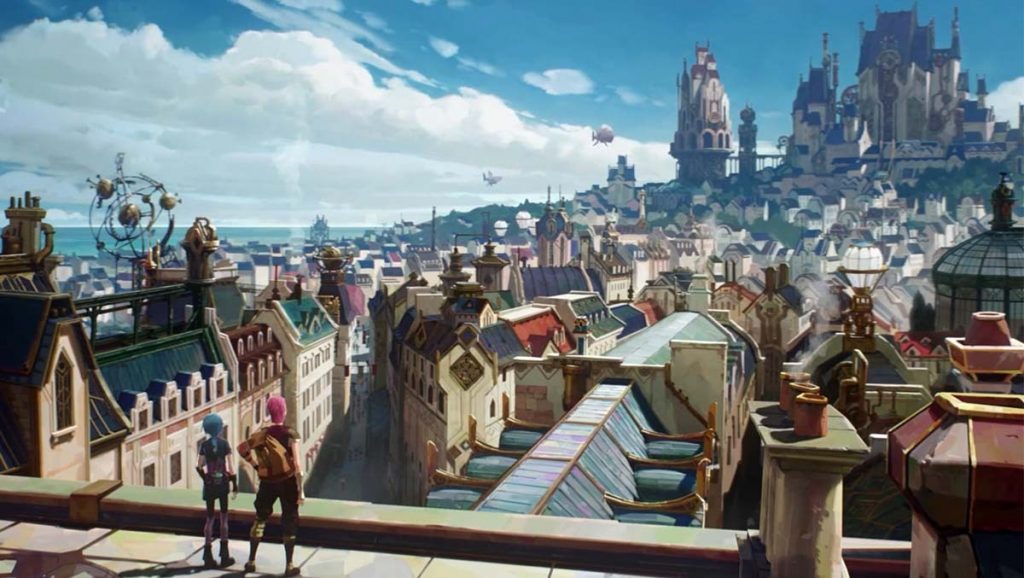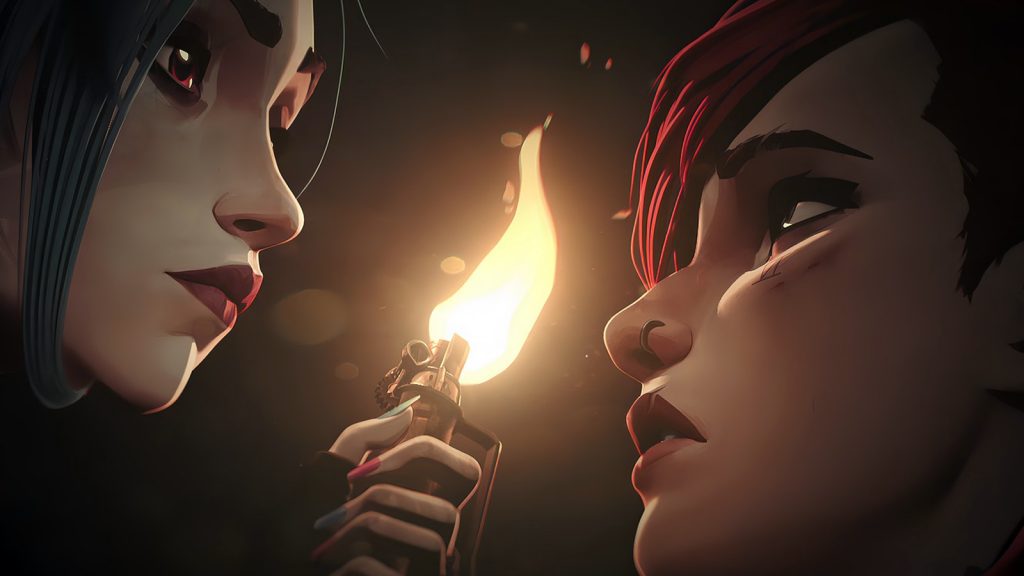Animation continues to be disrespected as a medium in Hollywood, as streaming services keep slashing animation budgets and cancelling popular series. When it’s not, it primarily exists as one of two genre extremes: cartoons targeted at children, or explicit adult comedies. But things are changing. In November of 2021, Riot Games and Fortiche Studios partnered with Netflix to release the highly anticipated animated series Arcane: League of Legends, based on the titular video game. Tragic and dark with an airtight plot, Arcane burst onto the scene to near-perfect praise, with many critics claiming it finally laid the “video game curse”—the historical trend of disappointing and unfaithful video game adaptations—to rest. Audiences have praised Arcane’s success as a fully-fleshed exploration of an existing media property (it won “Best Adaptation” at The Game Awards 2022) and a notable achievement in animation. The show presents an even greater potential, though: Arcane is an example of everything speculative genres could be if animation was embraced as a medium deserving of attention and respect.
The response to Arcane made me wonder if public opinion on animation could be shifting overall. Reading through reviews on Rotten Tomatoes and IMDb, I braced for phrases such as “childlike,” or statements focusing on the medium over the plot. Instead, viewers enthusiastically engaged with the animation alongside every other element of the show. Most people praised the incredible story, speaking about it in ways that didn’t feel any different from discussions of a typical live-action drama. I was pleasantly surprised that, contrary to public opinion, it seemed these sci-fi fans cared about an impactful narrative over everything else. So why do the vast majority of sci-fi releases continue to be live-action, when animation could open up new creative opportunities?

Arcane alternates between the dark cyberpunk “Undercity,” filled with whimsical art nouveau designs, and the shining steampunk upper city of Piltover, inspired by art deco Parisian architecture. Anthropomorphic immortal fantasy creatures called “yordles” walk the streets alongside humans with bionic limbs, and chemical-powered neon signs contrast with delicate mechanical butterflies. Creating environments of this scale for live-action would take a ridiculous amount of time and effort; making them look believable would have an even greater financial cost. While Arcane was certainly not a fast-produced nor cheap endeavour, massively successful sci-fi shows with higher budgets still face criticism from fans for instances of poorly executed CGI or falling into the uncanny valley. With animation, these issues can be eliminated when animators are given creative control and the budget to make it happen.
To avoid getting stuck in the uncanny valley, the animators behind Arcane used their artistic backgrounds to create a style like no other. For example, characters have such detailed facial movements that their expressions appear completely realistic; this is paired with overlaid surface texturing and hand-painted backgrounds that make every shot look like a landscape from a museum painting. Fortiche Studios’ unique blend of 2D and 3D animation has been cited as the standout element of the show, and one that has secured Arcane’s position in the history of animated media. Professional animators have described their amazement at the techniques implemented for a project of this scale, some of which Fortiche is determined to keep secret. It’s certainly something I’ve never seen before, and since Arcane, I’ve found myself wishing that other animated media I watch could be in Fortiche’s eye-catching house style. By staying away from a hyper-realistic look and embracing artistic “imperfections” such as noticeable brush strokes, their animation flows together in a way that makes the characters and settings actually feel more real. Stepping back from the edge of realism allows space for imaginative elements to fit naturally into the overall presentation. While characters are rigged 3D models, their texturing is painted on, and all effects such as smoke, water, and sparks are animated in 2D, frame by frame. When asked how to achieve the “painted” look, one animator gave a simple answer: “We paint.” This beautiful harmony of modern technology and traditional techniques reflects not only the show’s central conflict (science versus magic) but also the mix of futuristic science fiction with more archaic fantasy worldbuilding that can be found in certain speculative fiction subgenres. That is part of what I believe makes the medium so incredible—that animation in itself can be a metaphor for the themes present in SF/F, enhancing the story in a totally unique way.

Arcane proves that animated sci-fi dramas can succeed both in public opinion and critical acclaim (it achieved four wins at the 2022 Emmy Awards), and reveals that bias against animation as a format for serious dramas has done a disservice to speculative fiction. Sci-fi and fantasy have always allowed audiences to believe in the possibility of impossible concepts. Through animation, those fantastical elements can come to life in ways they can’t in other mediums. Abstract ideas that are difficult to translate to live action can be explored in their entirety without risking the suspension of disbelief that can occur with CGI and practical effects. I recently finished the 2019 speculative novel This Is How You Lose the Time War, a narrative that’s more poetry than plot. While taking in Amal el-Mohtar and Max Gladstone’s indescribable settings and scenarios, all I could think was how impossible a screen adaptation would be—unless it was animated. While screen adaptations shouldn’t be the necessary endpoint of a work—stories deserve equal respect in written form—many otherworldly SF/F works could thrive in an animated format. I can only hope that more film executives will turn towards animation as a potential avenue for future SF/F projects.
